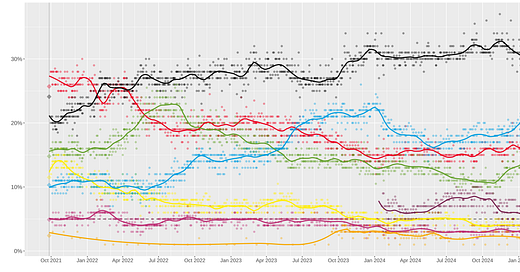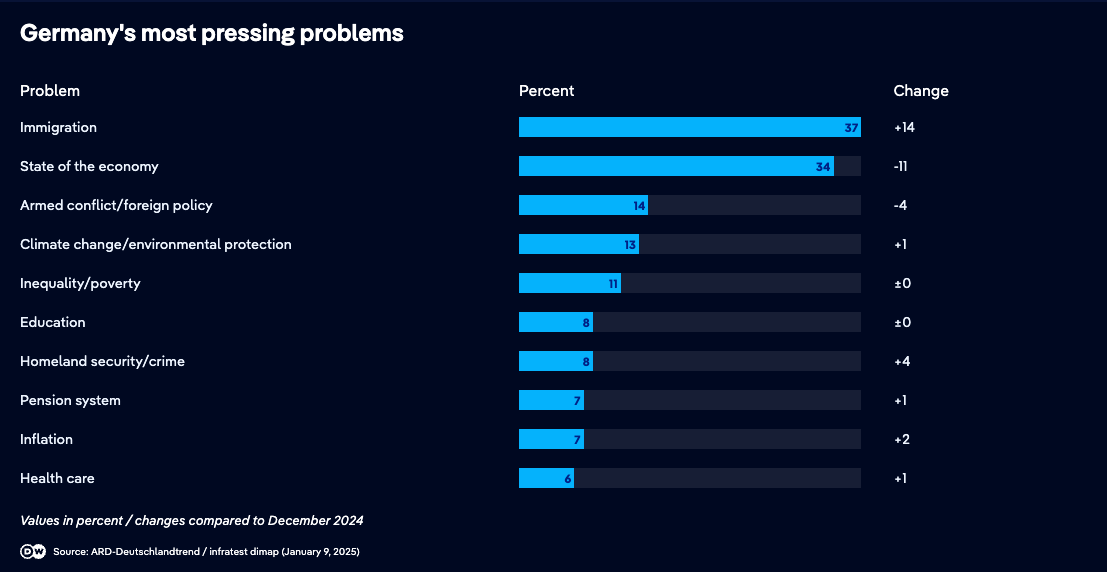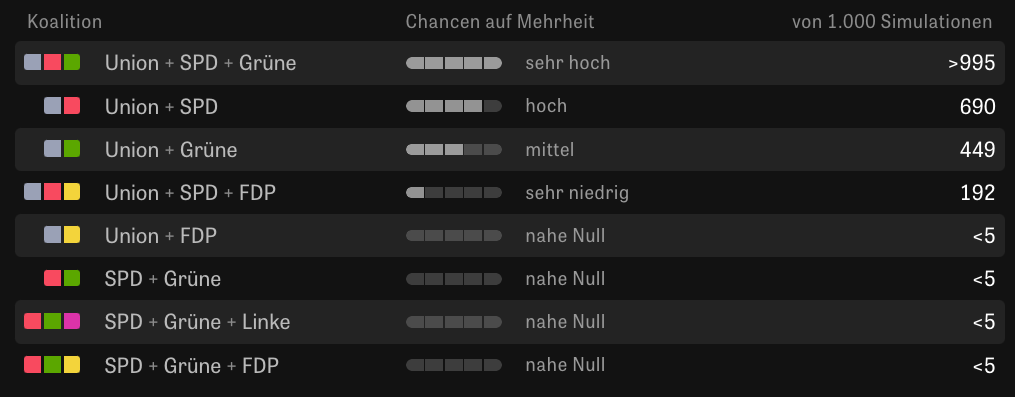Imagine coming from a country where elections were as simple as choosing between one candidate or... well, the same candidate. Now here I am in Germany, where they've turned voting into something that feels like assembling IKEA furniture while solving a Rubik's cube
If you're like me—one of the lucky new voters in the upcoming Bundestag elections—you're probably staring at the political landscape like it's a menu in a restaurant where you can't pronounce anything. With a total of 29 parties (number varies by state) to choose from, it’s not just about picking your favorite—it’s more like deciding which stranger will disappoint you for the next few years.
Why Are We Having Elections Now?
This election is happening 6 months earlier than originally planned (early in Germany 🤔?) because the current governing coalition (known as the "traffic light coalition") has effectively run out of gas. After months of internal arguments and public dissatisfaction, the coalition collapsed, leading to early elections. As a first-time voter, I’m trying to make sense of all this—not just for you, but for myself too.
How German Elections Work
If you’re more of a visual learner, there are plenty of animated explainers out there (2-minute videos).
Germany doesn’t like to keep things simple—just look at their grammar. Voting is no exception. Instead of just picking one person and calling it a day, you get TWO votes. Yes, two. Because one vote would be too easy, right?
Your first vote (Erststimme) is for picking your local candidate - kind of like choosing the neighbor you trust the most not to mess things up. The second vote (Zweitstimme) is the important one because it determines how many seats each party gets in the Bundestag.
Officially, the Bundestag has 598 seats, but due to a wonderfully complicated system involving overhang and leveling seats, it usually expands to over 700—like a small gathering that suddenly requires extra chairs from the neighbor’s basement. However, thanks to the 2023 electoral reform, efforts are being made to cap the seat count. To enter Parliament, a party needs at least 5% of the second votes, as the previous three-mandate rule has been removed.
Since no party ever wins outright, coalition building follows—a process best compared to high school clique drama, where parties team up with whoever irritates them the least. This leads to colorful alliances like the "traffic light coalition" (SPD, Greens, FDP) or "Jamaica coalition" (CDU/CSU, Greens, FDP)—very colorful names indeed. Once they awkwardly agree to work together, the Bundestag votes for the Chancellor, who then becomes the person everyone blames for everything.
The Big Issues: What’s Everyone Fighting About?
Economy: Germany's economy has been on a rather unplanned diet recently, showing signs of weakness. Unlike a toned, fit economy, this one looks more like it’s skipping meals and hoping for the best. The country’s bureaucracy is suffocating businesses, energy costs have surged since Germany’s messy breakup with Russian gas (though Russia cutting supplies due to the Ukraine war played a major role), and industrial competitiveness is slipping. Naturally, this is a major election issue—because no one likes economic doom.
Immigration: Immigration remains a contentious topic. Since 2015, Germany has taken in more than 3 million refugees and asylum seekers, putting pressure on infrastructure and sparking debates about integration. Economic challenges and public concerns about security have intensified discussions, with parties offering vastly different solutions—from stricter border controls to improved integration programs.
The Political Parties: Your Options
Here are the major players in this political spectacle:
CDU/CSU (Christian Democratic Union/Christian Social Union) The longtime dominant center-right force in Germany. Think of them as the "default setting" in German politics. They ran the country for 16 years under Angela Merkel, but since she left, they’ve been struggling with fresh ideas. The CSU, their Bavarian counterpart, adds a little extra conservatism, especially on immigration.
SPD (Social Democratic Party) Currently leading the government under Chancellor Olaf Scholz, they’re the center-left party championing workers' rights and the welfare state. They have a proud history but often struggle to differentiate themselves from the CDU—think of them as a band still playing their old hits but struggling with new material.
The Greens (Bündnis 90/Die Grünen) Originally an environmentalist protest movement, they’ve grown into a major political force. They’re the go-to party for climate action and progressive policies, especially among younger voters. Critics say their climate policies are a bit too ambitious (or expensive), making them a tough sell for industry and the average wallet.
FDP (Free Democratic Party) The self-proclaimed champions of free markets, low taxes, and digital innovation. If they were a person, they’d be the one at the dinner table explaining how the free market can fix everything. They attract business-friendly voters but often face criticism for prioritizing economic liberalism over social concerns.
Die Linke (The Left Party) The furthest left you can go without completely breaking the system. They push for wealth redistribution, social justice, and anti-war policies. A mix of ex-East German socialists and disillusioned SPD members, they struggle with internal divisions and the perception of being too radical.
AfD (Alternative for Germany) Originally founded as a Eurosceptic party, they’ve transformed into Germany’s leading right-wing populist force. They are strongest in Eastern Germany and focus on nationalism and anti-immigration policies. However, they frequently land in hot water due to extremist rhetoric and questionable democratic commitments.
BSW (Sahra Wagenknecht Alliance) The new kid on the block, founded in 2024 by former Die Linke leader Sahra Wagenknecht. They’re attempting an unusual mix: left-wing economic policies combined with conservative immigration stances. Essentially, they want to appeal to both frustrated leftists and conservative skeptics. Whether this cocktail of ideologies works remains to be seen.
Current Landscape
Polls suggest a strong lead for CDU/CSU, but if there’s one thing German politics is good at, it’s unpredictability. Coalition possibilities remain unclear, with alliances like CDU-Greens being floated (🤷🏽♂️). Keep an eye on polling updates for the latest shifts.
Zeit.de Coalition Predictions:
Making Your Choice
If you’re overwhelmed (which, let’s be honest, you probably are), try the Wahl-O-Mat website. It asks 38 questions to match you with a party. Pro tip: don’t just skim—read why parties support or oppose each position. I actually changed my mind after diving into their reasoning. Instead of getting lost in all parties, focus on your top two or three matches.
One important thing: Form your own opinion—don’t just follow the crowd. Think beyond your immediate needs and consider your future, not just the next few days.






